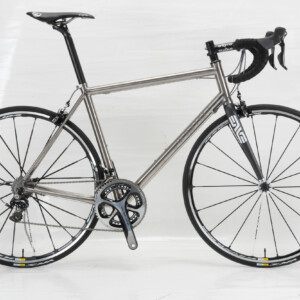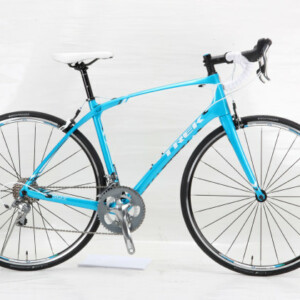Ahh Belgium! The spiritual home of waffles, fine chocolatiers, the so called ‘French’ fries (with mayonnaise), some 800 different beers and, of course, the Spring Classics. Throw in a pot full of Brussels sprouts and you have the makings of a veritable cycling festivus!
It’s also home to Ridley bikes, sponsors of the Lotto Soudal WorldTour team. Birthed only a few years back in 1997 by owner Jochim Aerts the brand has grown rapidly on the backs of strong product development, and the acclaim of WorldTour stage wins by the likes of Andre Greipel, Adam Hansen and Tony Gallopin.

Aside from designing bikes for sprinters and climbers and GC riders Ridley has a vested interest, in developing a bike that will excel on the famed cobbles of its homeland. Their sponsored pro riders ride stock, off the shelf, factory frames, and the development team is able to implement improvement feedback quickly, sometimes using 3D printed prototypes to speed up their innovations.
Enter the Fenix. (Note the Phoenix decal on the downtube indicating correct pronunciation). This bike has been tested; indeed raced by Lotto (when they were Lotto Bellisol) over the toughest roads in pro cycling. Gleaming black paint highlighted with red accents and some Lotto balls gives the Fenix a slick unique finish.
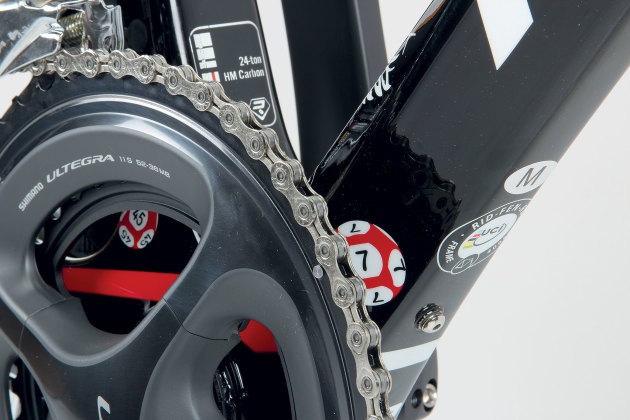
The frame is a sturdy conventional diamond shape, formed from 24 tonne high modulus carbon with some unusual tube profiles. The downtube has a diamond cross section (similar to the Ridley logo) with rounded edges. A little extra impact protection in the form of extra carbon layers has been applied to the underside of the downtube where stones may strike it. The seatube transitions from a round section at the collar to rectangular at the bottom bracket. The fork is a sturdy looking blade shaped unit with alloy tips…the rear dropouts are also bonded alloy.
The 24T carbon in the Fenix is a contrast to the 30, 40 and 50 tonne material in the Ridley Noah Fast, Ridley’s all out sprinting machine which we recently reviewed. The lower modulus rating indicates a lower level of stiffness and strength per unit. As a reference point the modulus rating of frames tends to top out around 60T. The value of the higher rating means less layers of carbon are required to achieve the frame’s requisite strength and it can therefore be lighter.

Stack and reach on this medium sized frame are 575 and 390 while the head tube is 175mm. The 410mm chain stays are quite deep and look very sturdy, and the seat stays are, somewhat surprisingly, not as slender as other ‘endurance’ category frames…so the bike has a quite a solid look. Overall the Fenix geometry is almost identical to the speedy Noah Fast, having only 5mm longer chainstays and half a degree steeper in the seat tube, so it’s not surprising the Fenix performs as well as it does on the road. The broad bottom bracket area and large sectioned tubes used across the frame provide plenty of resistance to the twisting forces of pedalling.
The headset bearings are oversized 1 1/8 -1 1/2. Interestingly oversized head tubes were introduced by Ridley in 2001 on their Damocles and have since been widely adopted by other brands.
Despite the conventional wisdom of slender, flexible, vibration absorbing seatposts being standard fare for endurance road bikes the Fenix’s post is a 31.6mm alloy unit. Likewise the stem and bars are sturdy alloy Stratos items from Ridley’s own 4za (pronounced forza) brand. It’s all neat and functional gear even though it’s rated by Ridley as their third tier, entry level range. The seat collar is the only component that looks a little too chunky.

The white bar tape chosen for the Fenix is thick and rippley, and as expected became grubby fairly quickly, whereas the rest of the bike retained its sharp fresh look throughout; it’s a small aesthetic detractor.
This frame is Di2 compatible should you wish to buy a frame and/or retrofit your electronics. There’s an external battery mounting point forward of the BB, and, though you’d need some different cables and possibly a new charging/ junction box to move this way, the internal seat-post mount is a much cleaner look.
All told the Fenix is reasonably light at just 7.84kg but the wheels and tyres claim a decent portion of this. Ridley specs Fulcrum Racing 5 wheels, weighing in at 1,757g with tape but no skewers. They’re 622 x15C wrapped in 25mm Continental Ultra Sport tyres. The tyres measure 25mm across on these rims and weigh 266g a piece. Not super light, but durable tyres that will survive some rough roads are more likely on the mind of the Fenix buyer than saving 50g at each end. The combo does take the edge off acceleration, but while it doesn’t have that sharp and snappy feel, it will wind up and hold speed easily enough. Again, its not such a big issue, as the Fenix is aimed less at the sprinter than the rouleur.
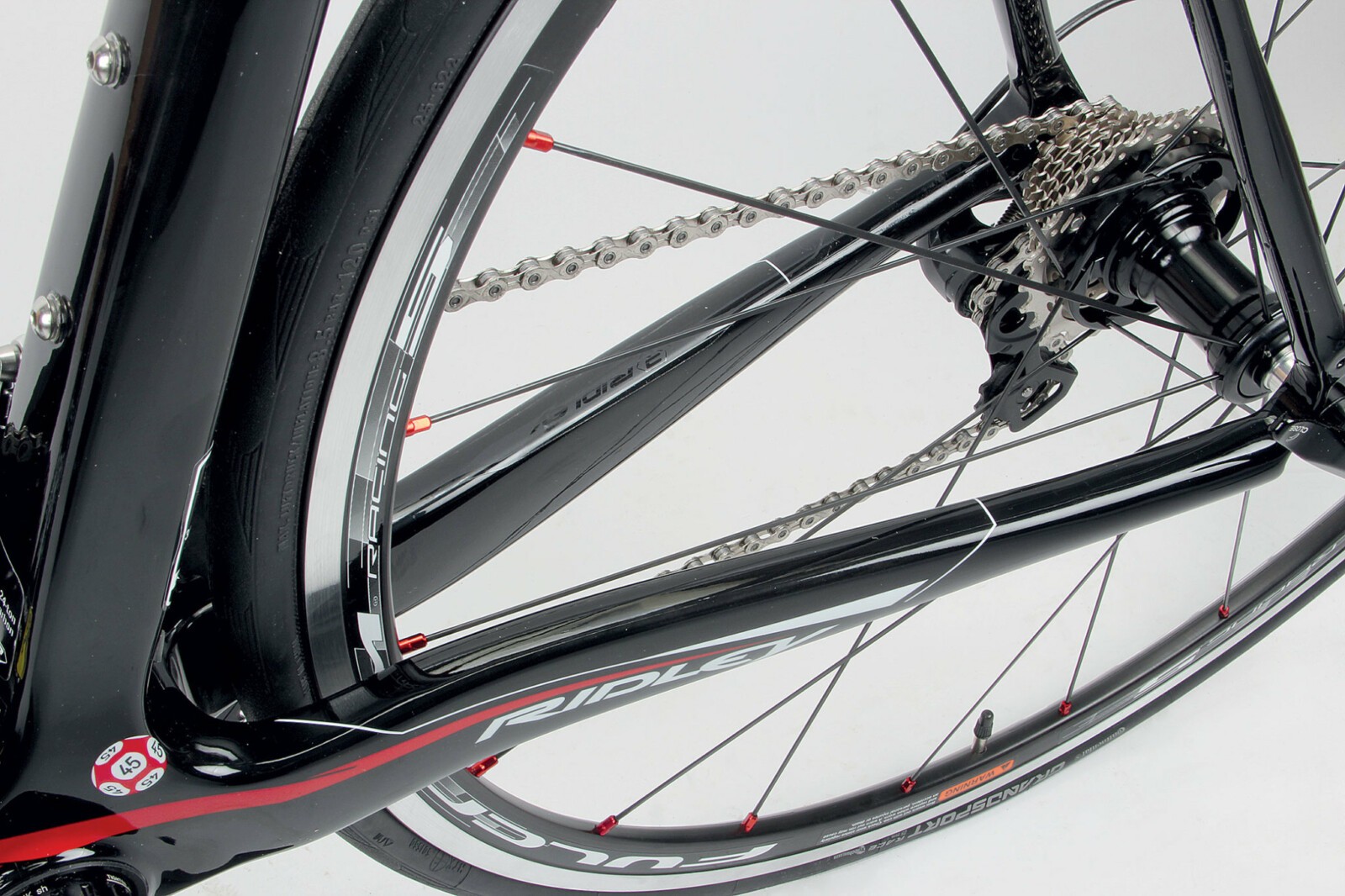
The overall balance of the bike is really well sorted—it feels solid and is exceptionally quiet. Powering over dead pavement, sections of pothole patchwork and choppy broken bitumen of local farmlands, the Fenix reduces chatter to a murmur. There’s no knocking of internal cables, not a peep from the 6800 Ultegra groupset, and even the Fulcrum’s freewheel is virtually mute.
The ride is smooth and planted…there’s no skittishness on rough surfaces, climbing on ripples where I expected the rear end to skip resulted in nothing, it stays hooked up powering forward. Cornering is equally sure, the whole package; frame, wheels and tyres, is well balanced and supple enough to provide good traction.
There’s no vagueness or drifting in corners; the steering is neutral and direct, encouraging you to lean into corners with confidence knowing full well the bike will carve a nice arc and allow you to hold good speed without breaking loose. I had a great time on the fast descent of Macquarie Pass where the 6800 Ultegra brakes put in a stellar performance mated with the Fulcrum rims, washing off just enough speed with confident ease when needed, and helping the Fenix easily keep pace with traffic— and then some.
Several aspects of the Fenix’s design may lead you to believe it wont be a very comfortable ride, despite its marketing all pointing to the bike being a cobbled classic specialist. The muscular seat stays and oversized seat post, alloy bars and stem, and the mid-tall gearing spec, the frame geometry that matches its brother Noah’s sprinting frame. Other pointers however, do tend to give you some hope that it may meet the brief… the 25mm tyres and 24T carbon, but they almost seem outgunned.
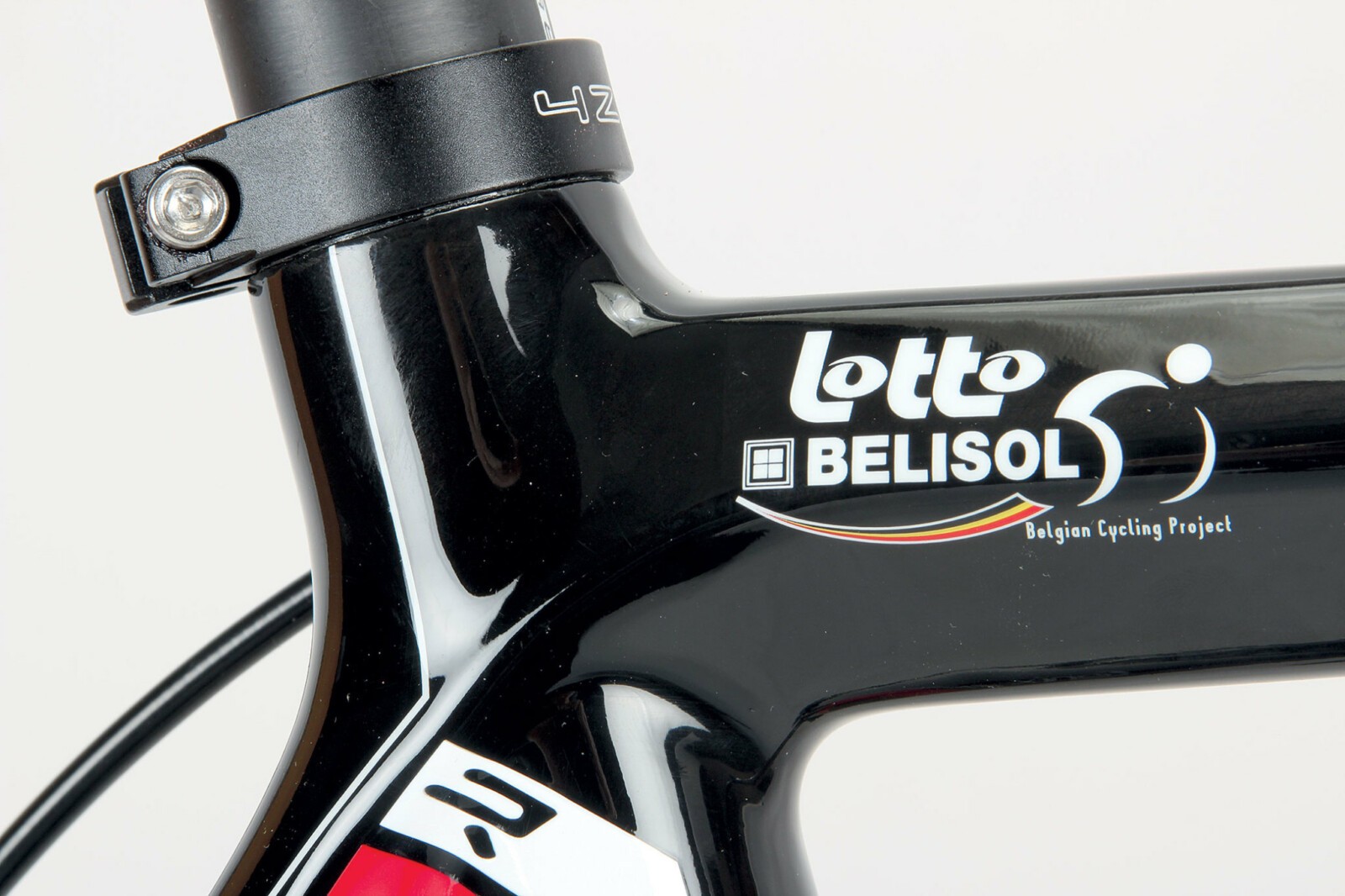
However, somehow the designers have pulled it off. There’s no question about it, the Fenix is very comfortable over rough roads, but beyond this, it handles and performs well enough to win races, and is a pleasure to ride.
Edit June 2016:
Ridley has signed a new distribution deal with FE Sports in Brisbane so the Australian market will see new models arriving for 2017.
SUMMING UP
QUALITY
The Fenix offers a full Ultegra 6800 groupset, attached to a well-designed, well-finished carbon frame that performs well too. While the other components and wheels are on par aesthetically and perform reasonably well they’re a marginal step down.
PERFORMANCE
I found the Fenix great fun to ride. The full Ultegra spec is a proven high perfomer, and while the Fenix’s frame takes the edge off a rough road, it climbs adequately, it descends like a stone, and overall handles extremely well.
VALUE
Gleaming carbon frame, Ultegra spec, WorldTour brand…I asked people to guess the price of the Fenix and most pegged it at four grand. However, it will cost you just $2,499, and as such, the Fenix is exceptional value for money.
OVERALL
Ridley has designed a high Ridley Ridley has designed a high performing bike in the Fenix. It’s decked out with a decent array of parts, has appealing, high class looks, and it significantly surpassed my expectations. At the 2.5k asking price it will very likely surpass yours.
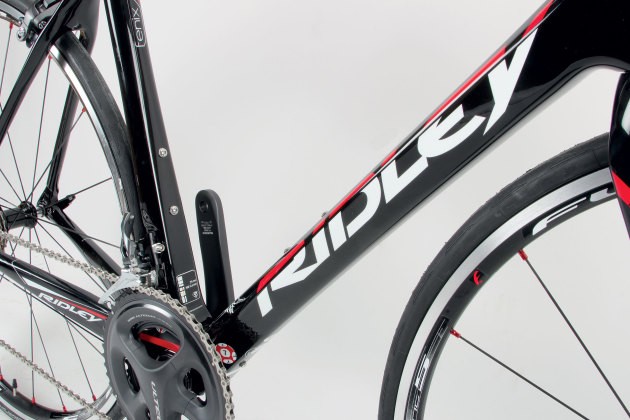
SPECIFICATIONS
FORK: Fenix C, 24T HM carbon
SHIFTERS: Shimano Ultegra 11s
FRONT DERAILLEUR: Shimano Ultegra 2s
REAR DERAILLEUR: Shimano Ultegra 11s
CRANK: Shimano Ultegra 52/36
CASSETTE: Shimano 11s, 11-25
CHAIN: KMC X11
WHEELS: Fulcrum Racing 5 LG
TYRES: Continental Ultra Sport II FB 700x25c
BRAKES: Shimano Ultegra
HANDLEBAR: 4ZA Stratos
STEM: 4ZA Stratos
SADDLE: 4ZA Stratos
SEATPOST: 4ZA Stratos 31,6x350mm
WEIGHT: 7.84kg
PRICE: $2,499
DISTRIBUTOR: FRF Sports

